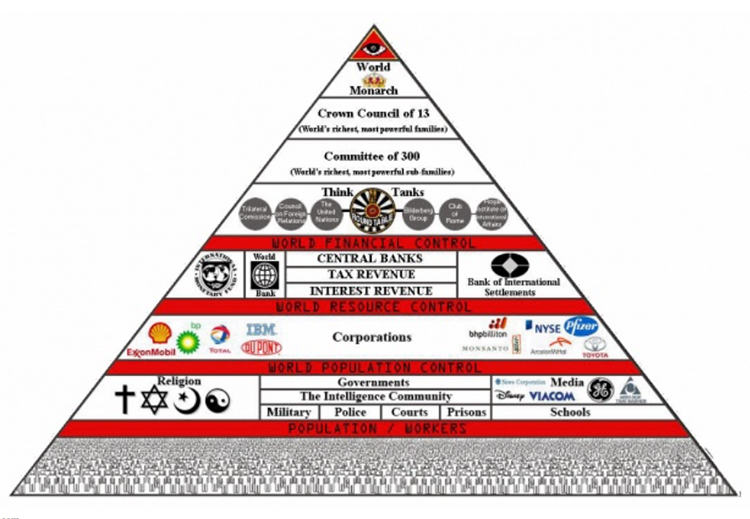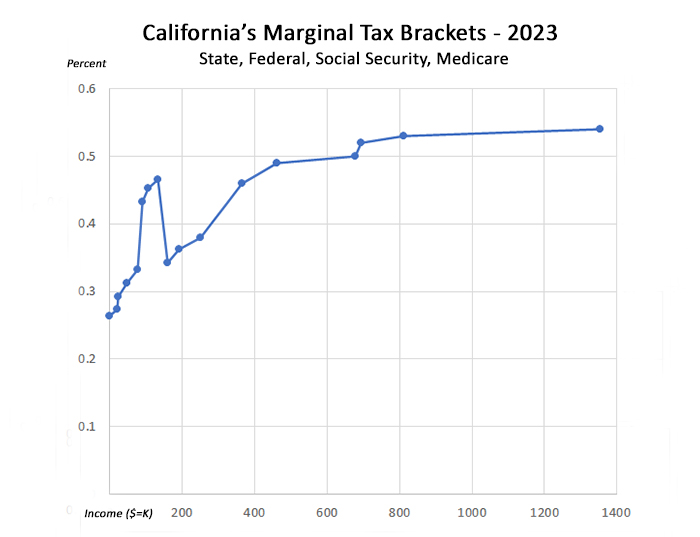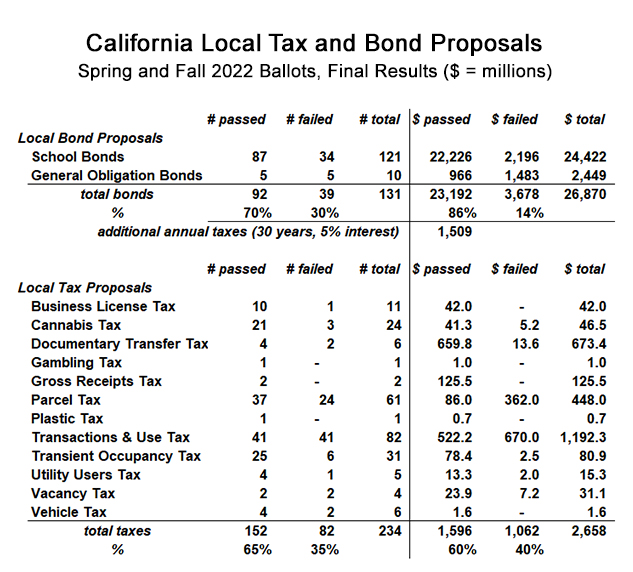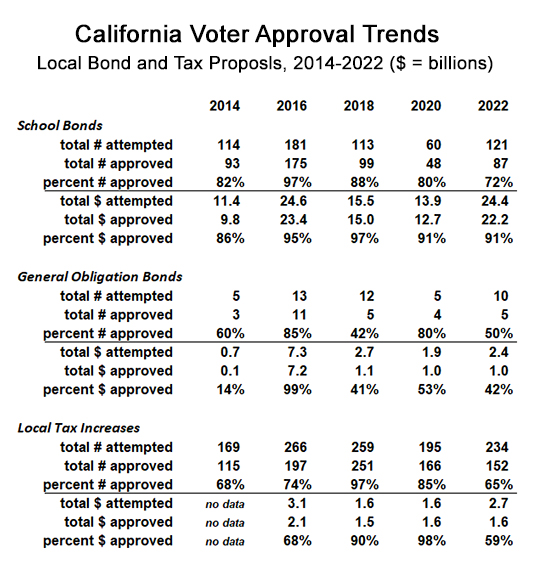Two Visions for California’s Future
The average retail price of regular gasoline in California as of April 3, 2024, was $5.15 per gallon. Since that’s an average, there are spots where the price of regular gasoline is significantly higher, as I learned over the weekend while spending $6.15 per gallon to fill the tank. Californians now pay more for their gasoline than Hawaiians, which is quite an accomplishment. The state of Hawaii is a remote archipelago in the middle of the Pacific Ocean, with no in-state petroleum resources to speak of, whereas California is sitting on some of the most abundant reserves of oil and gas in the world.
Despite proven reserves of 2.3 billion barrels of oil and potentially another 10 billion barrels locked in California’s so-called Monterey Shale formation, California imports over 70 percent of its crude oil. Most petroleum geologists agree that if oil exploration were permitted in California, the quantity of proven reserves is likely to triple. But through a relentless barrage of legislation, California’s state legislature and the activist agencies that oversee the industry are doing everything in their power to shut it down. The same regulatory assault is underway with California’s natural gas industry, where, despite plentiful in-state reserves, over 90 percent is imported.
It’s not just energy that is expensive and in short supply in California. Every essential building block of a successful economy is subjected to politically engineered scarcity. The state’s water infrastructure is neglected, and instead of investing in new ways to harvest and store the roughly 200 million acre feet of rain that hits the state even in dry years, billions are being invested in systems designed to ration urban water use while farms throughout the state are taken out of production for lack of irrigation water. Freeways are neglected as billions are wasted on a high speed rail project that, even if it is ever completed, will do virtually nothing to alleviate freeway congestion.
California even has a shortage of developable land, which is absurd since the vast majority of California’s nearly 40 million people live in urbanized areas that only consume 5 percent of the state’s total land area. You could build homes for 10 million people, at four per household on quarter-acre lots, with an equal amount of space set aside for roads, retail centers, parks, schools, and commercial/industrial facilities, and you would only increase California’s urban footprint to 6.5 percent. Such new “sprawling” developments would only consume 2,000 square miles in a state that occupies 156,000 square miles. But there’s “no room.” There’s also not enough water, energy, or good roads and freeways to accommodate newcomers.
All of this is by design. All of this is a political choice. It is the result of a consensus reached between a coalition of special interests that together wield almost unimaginable power. California’s public sector unions collect and spend nearly a billion dollars per year, using a sizable percentage of that money to make or break the campaigns of every elected politician, all the way from local water boards to the governor. They want endless environmental regulations so they can grow their regulatory and enforcement bureaucracies, and to pay for it, they don’t want to see public money invested in practical physical infrastructure. They’re not alone.
California’s public utilities, quasi-private and owned by stockholders, are held to a fixed profit by regulators. This means that the only way they can increase their earnings per share is by raising their revenue. No wonder investing in “renewables” is so favored by these utilities. With no competition and captive ratepayers, their stock price will be a lot higher when they’re charging $.50 per kilowatt-hour and passing 9 percent down to the bottom line than when they’re charging $.05 per kilowatt-hour. How convenient that the state has decreed “net-zero” by 2045.
Anti-growth politics also benefit the homebuilding industry, at least what’s left of it. With exorbitant fees, artificially inflated land prices, ridiculously overwrought building codes, unnecessarily costly building materials since almost nothing can be sourced in-state, and punishing delays in acquiring permits from a Byzantine array of hostile agencies, it is impossible to profitably build most types of housing in California without subsidies. But why fix that? The small builders give up and find new professions. The big builders that have opportunities to profitably build affordable market housing in less regulated states without crawling to the government for subsidies have done so. That leaves California with a handful of politically connected mega-builders collecting billions in subsidies to build “affordable housing.”
If that were a complete list, it would be enough, but almost every special interest in California wants scarcity. Tech billionaires love it because elevated energy prices allow them to develop and sell every manner of green product, from energy management systems and electric cars to chipsets for “connected” appliances ala the “internet of things.” The data gathering sector alone stands to gain billions in revenue by collecting and parsing behavioral data from consumers using connected appliances. In a state where energy and water were abundant, these products and services wouldn’t sell. As it is, not only does the backdrop of high prices make them rational consumer choices, but just in case, the state legislature is mandating their adoption.
Finally, there are financial special interests that profit from high asset values. From California’s mammoth public employee pension systems to hedge fund investors and real estate investment trusts, the contrived scarcity of land and resources makes investments in land and resources more rapidly appreciate in value. There’s big money in scarcity.
Another anti-growth special interest, if you want to call them that, are the Californians themselves. Not the newcomers, invited into the Golden Sanctuary State to take all those “jobs that Americans won’t do.” Rather, it is the group that’s been here for a few generations—those millions of Californians who live in homes paid for long ago, paying minimal property taxes, and don’t want another ten million people moving into their state. Many of them are retired and are indifferent to traffic congestion on the roads. Millions of them live close to the coast and don’t have significant expenses to heat or cool their homes. For them, the orchestrated panic over “climate change” provides moral cover for what they really want, which is to slam the door on opportunities for anyone moving here.
This extreme anti-growth vision defines California today. But there is another extreme worth imagining. California could be a state where the public decides it would be desirable to develop another two percent of the state’s geography with spacious suburbs filled with detached homes on spacious lots. They could embrace more drilling and refining of oil and gas within the state and set an example to the world of how to do it responsibly. They could build more safe nuclear power plants to generate additional gigawatts of electricity while substantially lowering the construction cost by streamlining costly state regulations and using their considerable clout to demand the federal government do the same. They could invest in practical ways to harvest additional millions of acre feet of storm runoff and build desalination plants to provide abundant water to coastal megacities.
In this alternate vision of California, millions of good jobs would be created, attracting talent from around the world, and since the cost of living would be dramatically reduced, even entry-level jobs would offer people willing to work hard the same opportunities for upward mobility that were present during the state’s last golden era, the 1950s and early 1960s, before the anti-growth forces began to take control.
It is left to the reader to decide which vision of California ought to prevail and which sort of example might inspire the rest of the world to emulate.
This article originally appeared in American Greatness.

Edward Ring is a contributing editor and senior fellow with the California Policy Center, which he co-founded in 2013 and served as its first president. He is also a senior fellow with the Center for American Greatness, and a regular contributor to the California Globe. His work has appeared in the Los Angeles Times, the Wall Street Journal, the Economist, Forbes, and other media outlets.
To help support more content and policy analysis like this, please click here.







